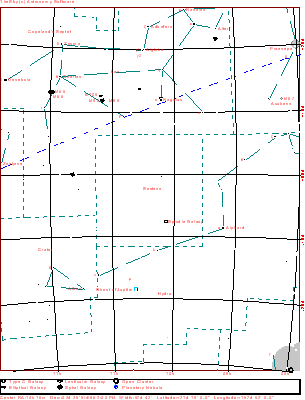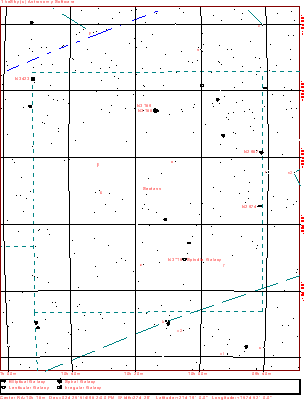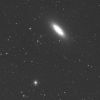
| Home | Deepsky Atlas | TheAstronews | Links | Solar System | ||||||

Hawaiian Astronomical SocietyConstellations: Sextans -- Navigation before GPS |
||||||||||

Click the map for a 909x1199 version of the above. Click here for a map better suited for use in the field.

This a more detailed view of the constellation. The map displays stars to magnitude 10, and deepsky objects to magnitude 12. Click here for a map better suited for use in the field.
 48k JPEG NGC3115 (Bennett 42, Best 88, Caldwell 52) is called the "Spindle Galaxy." Dreyer calls this lenticular galaxy very bright (mag. 9.7), large (8.3'x3.2'), very much elongated (P.A. 46°), and brightening sharply to a brightened, elongated nucleus. It lies 4.8° north of Lambda Hydrae. The other significant galaxy in the lower, left (south-east) of the photograph is the lenticular MCG-1-26-21 (mag. 13.5). 48k JPEG NGC3115 (Bennett 42, Best 88, Caldwell 52) is called the "Spindle Galaxy." Dreyer calls this lenticular galaxy very bright (mag. 9.7), large (8.3'x3.2'), very much elongated (P.A. 46°), and brightening sharply to a brightened, elongated nucleus. It lies 4.8° north of Lambda Hydrae. The other significant galaxy in the lower, left (south-east) of the photograph is the lenticular MCG-1-26-21 (mag. 13.5).
|
If you have any questions about the Hawaiian Astronomical Society
please
(link requires javascript).